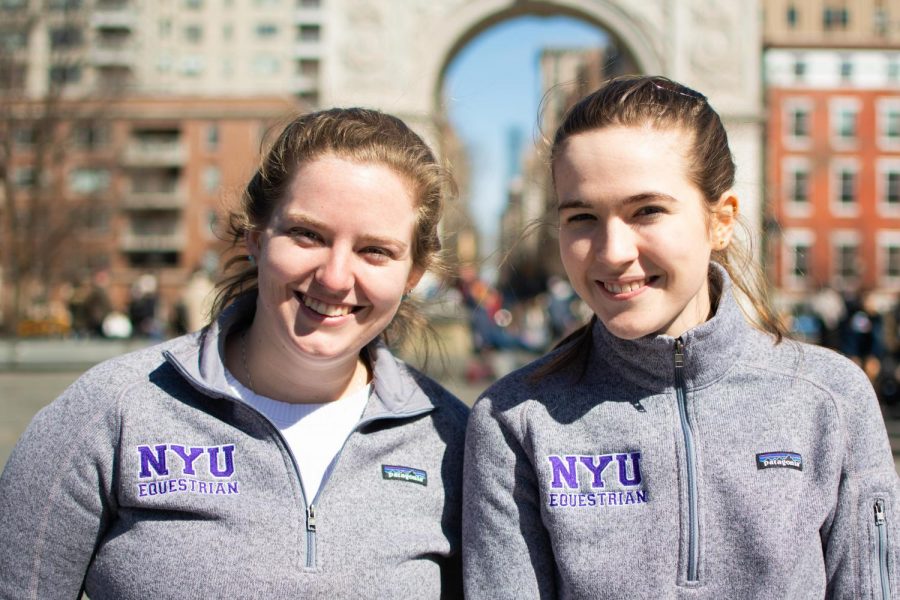Gallatin senior Lily Hitelman has been riding horses her whole life. Working with a horse and developing a sense of chemistry has always energized her, even when she had to wake up at 3:00 a.m. to prepare for shows. As Hitelman looked at potential colleges, it was important for her to find a school where she could continue riding.
“Everywhere that I was considering going had to have an equestrian team,” Hitelman said.
Four years later, Hitelman is the co-captain of the NYU Equestrian Team. The team competes in the Intercollegiate Horse Show Association, which is comprised of ten shows spread throughout the academic year. The shows are all-day events, requiring the riders to convene at 5:30 in the morning and ending between 5:00 and 6:00 at night.
“Being early is part of the lifestyle,” Hitelman said.
The shows are as much about the riders’ style as their aptitude on a horse. To score well, their posture and appearance are just as important as how proficiently they perform their jumps or how seamlessly they transition from a walk to a trot.
One of the most difficult aspects of competing in the IHSA will likely escape the attention of passive observers. By assigning them random horses each show, the IHSA also implicitly judges the riders’ experience and intuition, testing how versatile and adaptable the riders are by their ability to feel out a horse they are not used to riding.
“It’s definitely a skill in itself,” Hitelman said. “What is the horse telling you right now? What sort of ride do they want? What do they need from me? And how can I get that done quickly and efficiently without sacrificing my riding ability?”
The NYU Equestrian Team has performed well this season, second in their region to Long Island University. The team also has four riders who qualified for regionals: Hitelman, Tandon sophomore Frances Chu, CAS sophomore Fiddy Li and CAS senior Keisha Patel. Considering the lack of practice time, their record is all the more impressive. Unlike other teams in their region, NYU riders can only practice once a week.
“[Horseback riding] is based on strength, conditioning and muscle memory,” CAS junior and co-captain Alexandra Daley said. “So if you’re not as strong as other people in the same division as you, you’re not going to look the same.”
To compensate for the lack of practice time, Hitelman has suggested watching videos of skilled riders to her teammates. However, there is a limit to how productive off-saddle workouts and video analysis can be.
“There’s no absolute replacement for time on the saddle,” Hitelman said. “It uses muscles that you don’t really use everywhere else.”
With regionals approaching on March 29, many of the riders have competed in their last shows for the team, which has affected the seniors the most. For the riders, many of whom have ridden since childhood, the team has become a tight-knit community of students with the same passion.
“It’s given me a little home,” Daley said. “I’ve always been a part of the horse world, so it’s nice to have that little group of people that know this aspect of you.”
Hitelman will miss bonding with the team during the downtimes at shows, despite the early mornings and long days.
“I have lots of fond memories of just sitting at a show with everyone while we’re on a break,” Hitelman said. “We’re all just relaxing, looking at Vines or just goofing off, and enjoying spending time together.”
A version of this article appears in the Monday, Mar. 9, 2020, print edition. Email Kevin Ryu at [email protected].























































































































































